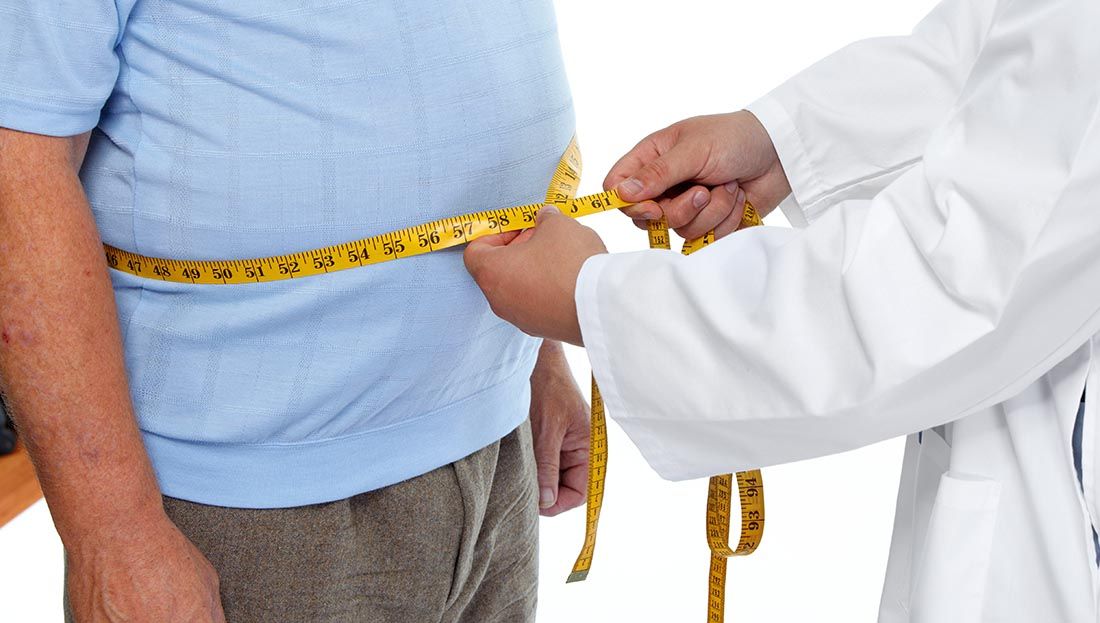
The incidence of obesity and chronic diseases have continued to climb at alarming rates. In 1985, not a single U.S. state had an obesity rate above 10%; today, the rate is 42% and appears to be climbing. The role of obesity is increasingly worrisome in relationship to cancer, which is estimated to affect one out of every two or three people in their lifetimes (males have a slightly higher risk than females). Not only does obesity contribute significantly to new diagnoses, but it also is a side effect of cancer treatments and medications. Individuals who have completed cancer treatments have a higher risk of recurrence, secondary cancers and other chronic illnesses, most commonly heart disease or diabetes.
These statistics can certainly feel discouraging, but there is some good news: Exercise can be a powerful tool in both the prevention of, and recovery from, cancer. In fact, intervention studies have shown that exercise can improve fatigue, anxiety, depression, self-esteem, happiness and quality of life in cancer survivors. This article examines the interconnectedness of cancer and obesity, and how health and exercise professionals can play a key role in helping clients make lasting lifestyle changes that reduce their risk of cancer. Also included are six recommendations that can help guide your programming for clients who have received a cancer diagnosis.
The Effect of Obesity on Cancer
Currently, there are an estimated 17 million cancer survivors (anyone with a cancer diagnosis who is still living) in the U.S. today. The incidence of cancer is rising and is expected to double by 2040, which has largely been attributed to lifestyle-related behaviors. However, the cancer mortality rate has declined by 3% for the second year in a row. While this is exciting news, it is largely due to smoking cessation rather than the efforts of exercise and obesity management−related programs. For many cancer survivors, obesity is a concerning side effect that elevates the risk of additional comorbidities such as heart disease, which is the number-one killer of breast cancer survivors.
According to the National Cancer Institute, obesity is a contributing factor for 13 types of cancer, making up 40% of the total cancer cases diagnosed in the U.S. each year. Many of the cancers on this list are driven by hormones, which explains the role of obesity in prostate, post-menopausal breast, endometrial and colon cancer. Others, such as esophageal, liver, multiple myeloma and kidney cancer, are somewhat surprising given the lack of direct correlation to body fatness. For this reason, it is important to understand that many of these cancers may be impacted by lifestyle-related behaviors such as consuming high-fat, processed food diets or being sedentary, which may be related to obesity.
It is also important to understand that having obesity can interfere with the effective delivery of cancer therapy and may contribute to an increased risk of death from treatments. Obesity increases one’s risk of infection and increases the incidence of poor wound healing and lymphedema. Research has suggested that more than half of the non-cancer-related deaths in cancer survivors are the result of cardiovascular disease, which has been largely attributed to weight gain rather than treatment-related heart damage.
Given that genetic mutations account for fewer than 10% of all cancers, it’s important to recognize the opportunity that each individual has for reducing their risk of developing cancer and many other chronic diseases such as hypertension and diabetes.
The Effect of Cancer on Obesity and Muscle Loss
Among people diagnosed with, and treated for, cancer, obesity or increased body fatness after diagnosis is reported as one of the most frustrating side effects. While the reasons are multifactorial, the loss of lean muscle is one of the biggest physical changes that occurs. A decrease in physical activity or exercise accounts for much of this loss, and also contributes to the number-one reported side effect of cancer: fatigue. As such, many researchers and clinicians are now making a compelling case for recommending exercise as a first-line treatment for cancer-related fatigue because it has proven to be so effective.
Common cancer surgeries such as mastectomy and colectomy (removing part of the colon) come with recovery protocols, which usually include physical limitations, such as weight or activity restrictions, as well as potentially long-term limitations. Even simple surgeries such as inserting a port-a-cath (a small, implanted device usually in the upper chest for easy access to take blood and deliver chemotherapy) may cause some individuals to become too afraid to use their arm, which leads to weakness, fatigue and loss of strength.
Additionally, medicines such as steroids (prednisone, dexamethasone), which are used to treat nausea or side effects such as inflammation in the lungs from chemotherapy, can also lead to a loss of lean muscle mass and more achy joints. For patients with advanced cancer, chemotherapy or immunotherapy are often present for the duration of their lives, which further increases the loss of lean muscle mass.
The Role of Health and Exercise Professionals
While increasing physical activity is generally considered the most straight-forward way to increase caloric expenditure, the role of resistance-training exercises was included in the multidisciplinary paper, Exercise Guidelines for Cancer Survivors, which was released in 2019.
In addition to 150 minutes of moderate- or 75 minutes of vigorous-intensity exercise, the panel recommended two resistance-training and stretching workouts per week. While these recommendations are similar to current Physical Activity Guidelines for Americans, they are less likely to be utilized in the cancer population in comparison to other groups. It has been reported that a majority of oncologists believe in the importance of exercise for patients with cancer; however, it is not yet a standard part of the cancer care plan for many patients. While oncologists and clinical care teams may depend on health and exercise professionals to take on this role, referrals are not yet commonplace, which means patients are often left on their own to determine how to incorporate an appropriate physical-activity program. Clearly, this is a need that certified health and exercise professionals are in a prime position to meet.
In addition to simply getting cancer survivors moving, exercise programs must also address the management of obesity. As with any client, long-term compliance is often largely based on results and outcomes, which is necessary to maintain motivation and, of particular importance to the cancer survivor, to simply feel better. Furthermore, helping clients improve their body composition is effective not only for improving their survival rate not only from cancer, but from all chronic diseases.
How to Get Started
The following six recommendations can help guide your programming for clients who have received a cancer diagnosis:
- Acknowledge where your client is today and identify where they want to go in the future. While weight loss is often a priority for someone newly diagnosed with cancer, weight gain is a more common side effect of cancer treatment. However, it is not uncommon for people to view their diagnosis as an opportunity to “get healthy.” As a health and exercise professional, you can provide the right kind of support to help these individuals lose weight in the right way for long-term success. In most cases, improving body composition is a reasonable and appropriate goal for someone with cancer who has obesity. (Note: At the time of this writing, the guidelines for weight management during cancer treatment are currently in development.)
- Make muscular training the foundation of your client’s exercise program. Individuals of every age and fitness level can benefit from muscular training to improve body composition and overall fitness. While twice-weekly workouts are recommended, progressively adding more muscle-building exercises can help improve lean muscle mass as well as reduce any functional deficits. The exercise program you create should take into account the client’s current functional status, treatment side effects (which are often related to cancer type,) and access to a gym or equipment.
Check out this article for some ideas for creating muscle-strengthening programs for all levels.
- Encourage more daily movement. Assess and discuss your client’s daily movement patterns. In general, adults in the U.S. are moving less than ever before (a rate made worse by the pandemic), and individuals with cancer tend to move less than their healthy counterparts. Encourage your clients to use a fitness app or wearable device to monitor their overall daily movement, and offer suggestions and encouragement for how they can increase their daily physical activity (in addition to planned exercise), which will help to increase their caloric output. The Physical Activity Guidelines for Americans mentioned earlier offer a simplified point of view for becoming more physically active that may make this recommendation more achievable. Throughout each day, urge your clients to think about moving more and sitting less and to remind themselves that some physical activity is better than none.
- Help your client identify their triggers. Habits such as emotional eating, overconsuming alcohol or relying on processed or convenience foods are often related to trying to manage one’s emotional well-being. Keep in mind that when a client tells you about their current habits, this may be an opportunity to validate what they are doing well and to recognize and respond to change talk to best support and guide clients looking to make improvements. The stressors of cancer combined with not knowing where to start or how to make improvements can create a very real challenge for many individuals who desire to make behavior changes. For these reasons, it is important to honor and support each clients’ capacity for change. Working together to identify barriers, creating positive goals and taking incremental steps can cultivate success. Once a trigger has been identified, encourage your clients to consider what they perceive to be the simplest approach for coping with stressors in a healthier way. For some, this may mean following recommendations from the Dietary Guidelines for Americans and making slight changes to what they eat instead of a complete overhaul. Incrementally, your clients can think of making every bite count, making nutrient-dense choices one meal at a time and making healthy choices one day at a time.
- Prioritize sleep and recovery. Recovery is absolutely essential for helping the body heal from cancer treatments or surgeries. Active recovery, such as stretching, walking or some forms of yoga or tai chi, should be included as part of a regular exercise program, particularly between workouts. Sleep should also be considered an essential part of the recovery process. Poor sleep diminishes energy for exercise and also triggers cravings by suppressing hunger hormones. In addition, sleep deprivation is known to reduce protein synthesis, which is important to feed muscles to grow. Encourage your clients to practice good sleep hygiene and, if needed, to incorporate strategies such as breathing or mindfulness if they are having a hard time sleeping due to emotional stressors.
- Remember that nutrition plays a key role in weight loss and obesity management. It’s important to work with a nutrition specialist such as a registered dietitian for personalized recommendations. While there is little evidence to support a particular “cancer diet,” following a dietary pattern that is plentiful in lean proteins, fruit, vegetables, complex carbohydrate sources, nuts and seeds may be helpful. These foods may reduce both the risk of developing subsequent cancers and the risk of chronic diseases such as diabetes or heart disease. Additionally, it is generally recommended that people limit saturated fat, red and processed meat, and simple sugars.





 by
by 


